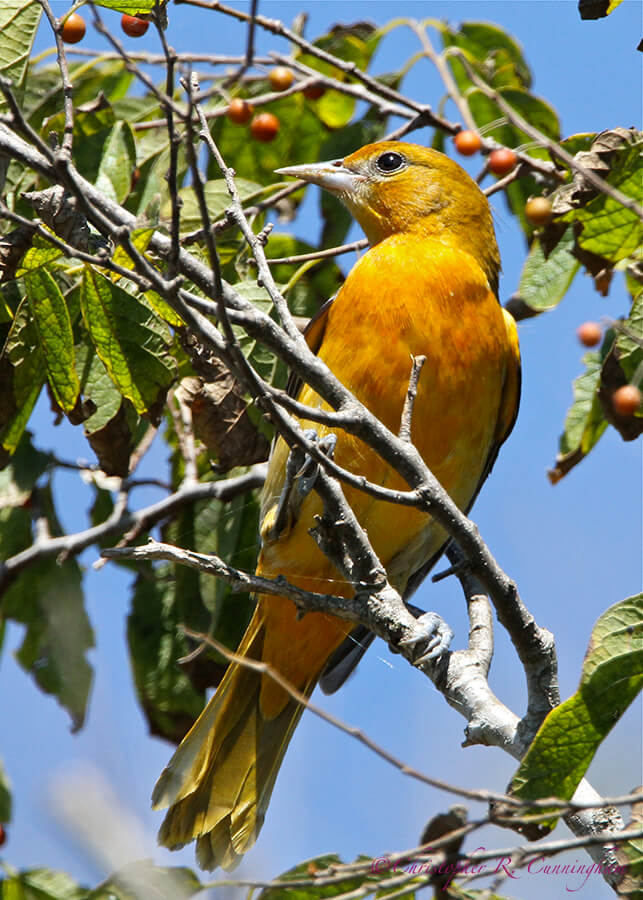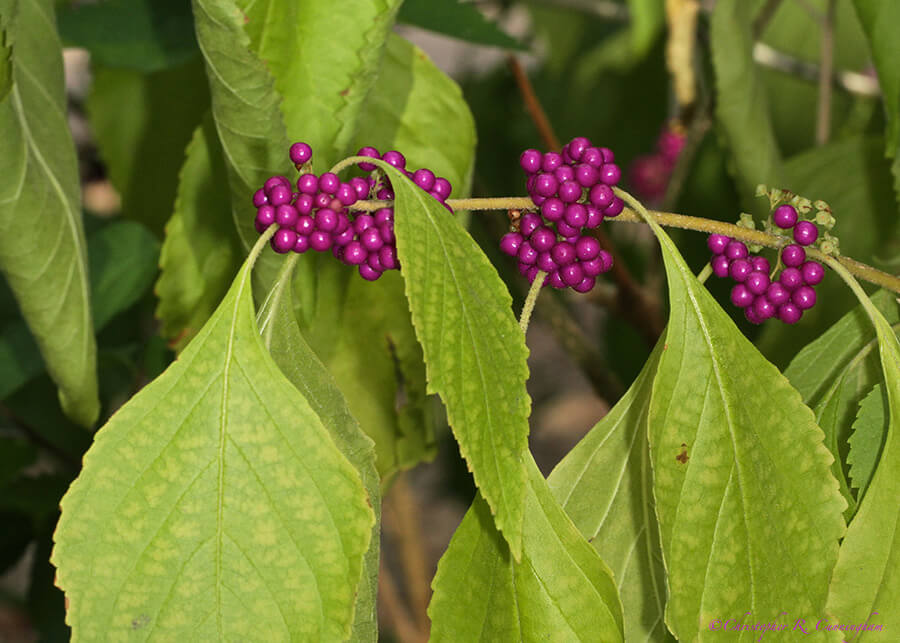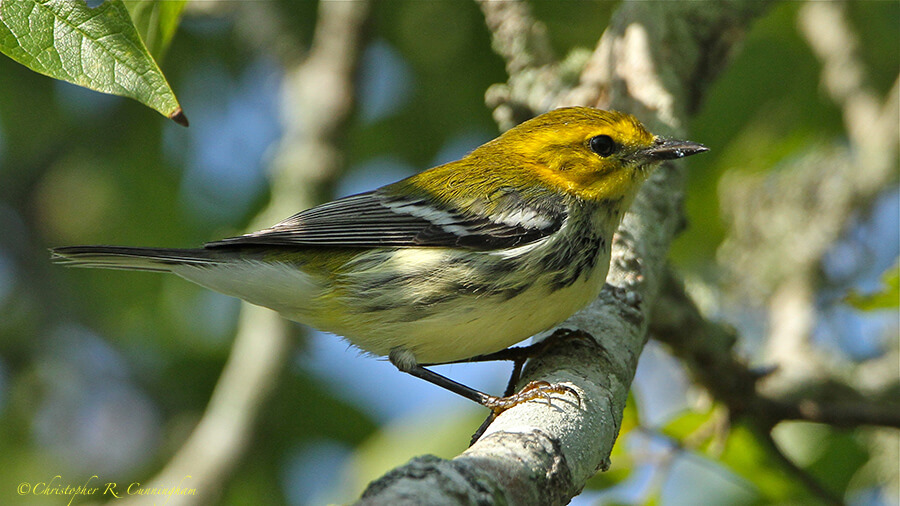
One of the highlights of birding during the summer/fall transition is witnessing the explosion of fruits that come into season at this time. Last Saturday (9/14) I visited the Edith L. Moore Nature Sanctuary in west Houston. Even though the drought had caused many of the plants to droop and otherwise appear stressed, the understory was bursting with ripe beautyberries and pokeberries, and greenbrier vines laden with shiny orange berries climbed to the heights everywhere. Yaupon berries were still green or just beginning to turn red and will provide food for birds later in the fall and winter.

The beautyberry and pokeberry patch was thick with frugivorous American Robins and Northern Mockingbirds. A few Blue Jays and Northern Cardinals were also hanging around the patch. Mockingbirds were plucking greenbrier berries from vines high in the crowns of trees. On Wednesday (9/18) I returned to find that many of the berries had already been stripped from the plants. But, never fear, in the shadier areas the next crop of ripening berries was waiting in the wings.
For the birder, some plants with ripe berries are worth staking out. Hackberry trees, for example, are a favorite among primarily insectivorous birds (like warblers), as well as those mainly interested in fruits. A hackberry tree is a mini-ecosystem–fresh and decaying fruit attracts insects. Spiders hunt the insects from webs and the nooks and crannies of rolled-up leaves, and warblers grab the spiders. Ecosystems: they work!

O Autumn, laden with fruit, and stained
With the blood of the grape, pass not, but sit
Beneath my shady roof; there thou may’st rest,
And tune thy jolly voice to my fresh pipe;
And all the daughters of the year shall dance!
Sing now the lusty song of fruit and flowers.
–William Blake
©2013 Christopher R. Cunningham. All rights reserved. No text or images may be duplicated or distributed without permission.